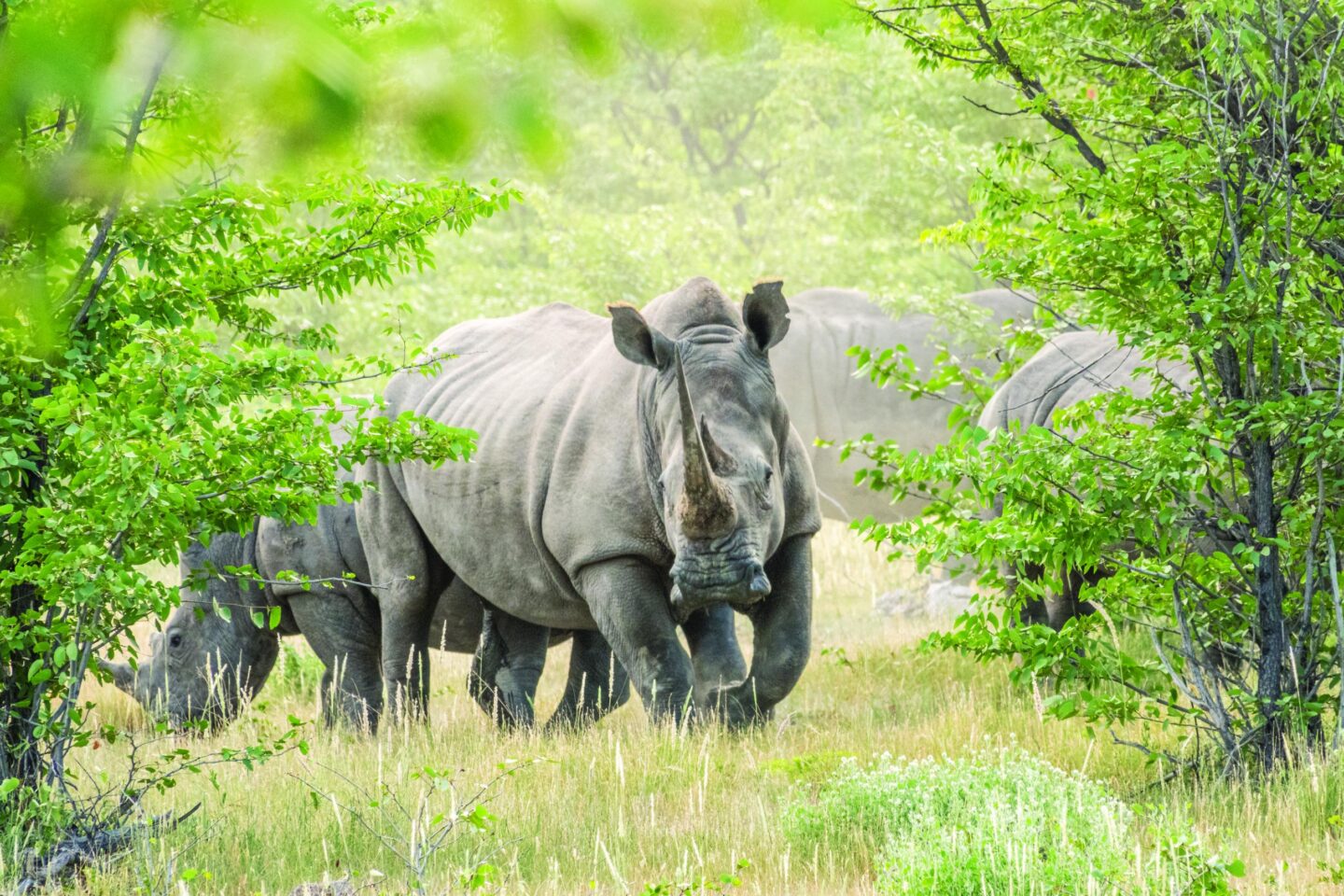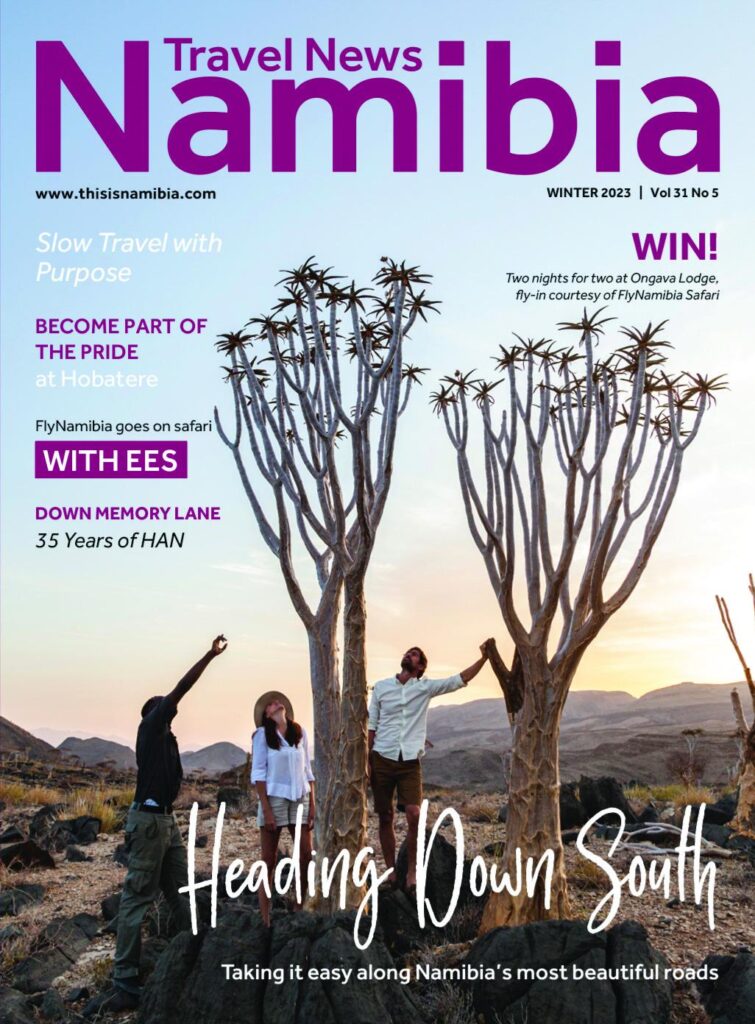

10 things
you might not know about rhino conservation in Namibia
From the Winter 2023 issue
- Namibia is home to the largest population of black rhinos in the world, with over 1,800 individuals.
- Rhino conservation efforts in Namibia have been successful in increasing the population of both black and white rhinos, with numbers rising over the past several decades.
- Rhino protection and breeding programs, along with anti-poaching efforts, have been crucial in the successful conservation of the species in Namibia.
- Community-based conservation initiatives, where local people are involved in protecting rhinos and their habitat, have been effective in reducing poaching and ensuring long-term survival of the species.
- Namibia was the first African country to introduce “rhino trophy hunting” as a means of generating revenue for conservation efforts. With this programme, an incredibly small number of animals, past their reproductive age, are made available for hunting, which generates large amounts of revenue that can be put towards conservation.
- The Black Rhino Custodianship programme has also shown successes, whereby black rhinos, legally owned by the State, are given to private landowners to foster and protect.
- The Namibian government has taken steps to combat wildlife trafficking, including implementing stiff penalties for those caught illegally trading in rhino horns.
- The country’s tourism industry has also played a role in rhino conservation, with ecotourism and wildlife safaris generating revenue that is used for conservation efforts.
- Namibia has a strong network of protected areas and national parks, which provide habitat and refuge for rhinos and other wildlife.
- Ongoing monitoring and research efforts are crucial in ensuring the continued survival and recovery of rhinos in Namibia, and include tracking populations, monitoring reproductive success, and studying behaviour and habitat needs. TNN
Facebook
Twitter
LinkedIn
Pinterest






